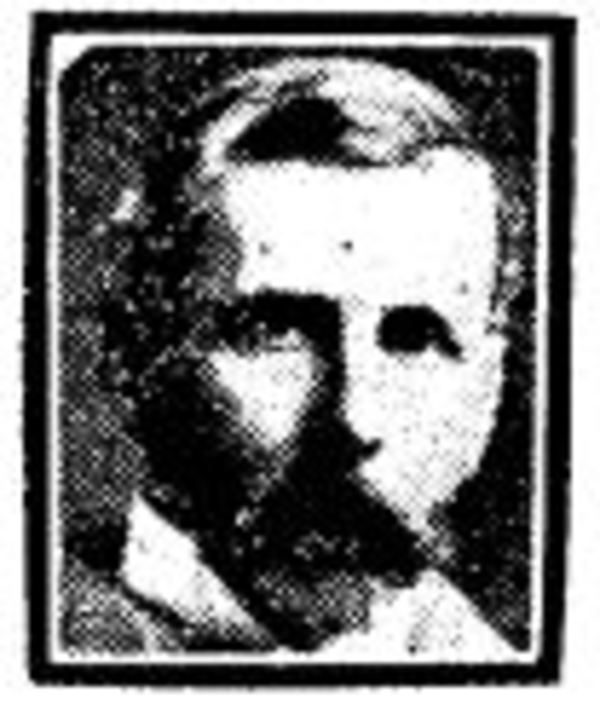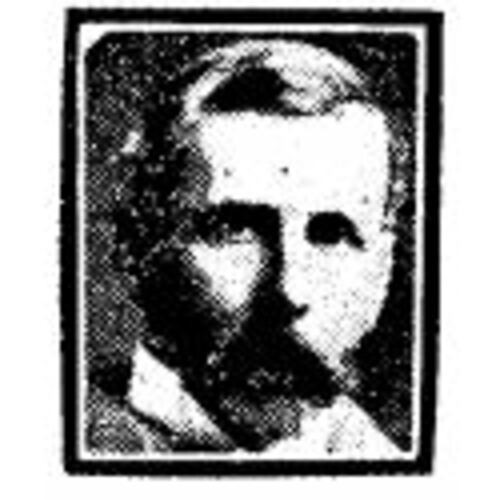
Source: Link
LEFROY, AUGUSTUS HENRY FRAZER, lawyer, university professor, editor, and author; b. 21 June 1852 in Toronto, second son of John Henry Lefroy* and Emily Merry Robinson, daughter of John Beverley Robinson*; m. there 22 Sept. 1884 Theodora Strathy, and they had three sons; d. there 7 March 1919.
A. H. F. Lefroy was educated in England, at Rugby and at New College, Oxford, where he took an honours ba in 1875. He was called to the bar in England in 1877 and in Ontario the following year. During the 1880s and 1890s he practised law in Toronto in a series of small partnerships; he also served as a court reporter from 1895 to 1909. In 1899 he became a professor of law at the University of Toronto, a position he would hold for the rest of his life, although he continued his practice as well. He was made a kc in 1908, and was editor of the Canadian Law Times (Toronto) from 1915 until his death.
Lefroy’s significance lies entirely in his scholarship, which made him the leading common-law scholar in Canada in the late 19th and early 20th centuries. Beginning as soon as he returned from England in the 1870s, he wrote extensively about the theory of common law and about Roman law, jurisprudence, and constitutional law. At his death he had written 4 texts, over 30 substantial articles, and many reviews and editorial notes, and had translated or annotated several more texts.
Lefroy’s major writing about the common law consisted of two articles in the Law Quarterly Review (London, Eng.): “Judge-made law” (1904) and “The basis of case-law” (1906). Both pieces explored the questions whether judges made law and, if they did, how they made it, questions that engaged most of the English and Canadian common-law scholars of his generation. Lefroy’s answer was that judges did make the common law, by reasoning from basic “broad principles of law” and from “the various transactions and relations” of society. The sources from which they made law and from which they reasoned were “1. Justice, humanity, and other moral obligations. . . . 2. Common sense, and the reason of the thing. . . . [and] 3. Public convenience and other practical considerations . . . .” Once made, law could not be changed; judges were obligated to follow precedents. These conclusions were not unconventional, but Lefroy’s extensive analysis of the methods and sources made the articles significant. Throughout them and his other writing about the common law, he was faithful to English ideas and authority. There was no indication that he considered any of the literature from the United States, where these ideas were being challenged, for example by Oliver Wendell Holmes and Roscoe Pound.
More of Lefroy’s writing was about constitutional law than about common law, and its centre-piece was a single book, The law of legislative power in Canada (Toronto, 1897–98). Earlier articles by Lefroy anticipated it, and the works that followed were based on its ideas and structure. Its long introduction was a statement of his basic constitutional beliefs, in the form of a denial of the claim of noted English jurist Albert Venn Dicey that the constitution of Canada was essentially similar to the constitution of the United States. Lefroy argued that the British North America Act gave Canada the British constitution, particularly the supremacy of legislatures and constitutional liberty, coupled with federalism. The supremacy of legislatures was fundamentally different from the ultimate power of the people that was the foundation of the United States constitution. Throughout his introduction, Lefroy passionately demonstrated both his loyalty to Britain and the empire and his belief that such loyalty was in no way inconsistent with Canada’s eventual maturity.
The text of the work was exclusively about the division of legislative powers. By the time he wrote it, the courts had decided several important cases, including Russell v. the Queen, Citizens’ Insurance Company v. Parsons, Hodge v. the Queen, and the prohibition reference of 1896 [see Sir Oliver Mowat*]. These cases seemed to lawyers to be a tangle of uncertainties, and Lefroy’s objective, stated expressly in his preface, was to extract general principles from all the decided cases. The result was 68 numbered propositions, each followed by extensive commentary, which were an early and important consolidation of the doctrine about the nature and division of legislative powers. As well, the text was a major statement of the doctrine of coordinate or classical federalism, which had become dominant in the 1880s and 1890s. Coordinate federalism was characterized by equal and autonomous spheres of power for both the dominion and the provinces. These ideas and language about federalism were employed powerfully in the political arena by such dominant lawyer-politicians as Mowat, David Mills*, and Edward Blake, to express the claims of the provinces in the provincial rights debate.
Lefroy’s analysis was abstract, without any description or discussion of the social or political context, and it made the courts central. In this way, it was markedly different from the approaches taken in earlier Canadian texts, for example, Dennis Ambrose O’Sullivan*’s A manual of government in Canada . . . (Toronto, 1879; rev. ed., 1887) and William Henry Pope Clement’s The law of the Canadian constitution (Toronto, 1892), which had tended to consider more history and context, and a wider range of institutions. Lefroy believed that even though the courts made the common law and made crucial decisions about the division of powers, they did not impose their personal wills. Instead, they reasoned in an objective way from the shared principles of the common law, or from the will of legislatures embedded in the text of statutes.
Lefroy was not an original or distinctive thinker. His beliefs about legal reasoning, courts, and his function as a scholar were the ways of thinking that were becoming dominant during the second half of the 19th century in England, the United States, and Canada, and that remained so throughout most of the 20th century. Lefroy was an early and important representative in Canada of this transition.
A. H. F. Lefroy’s three other monographs, all published in Toronto, are Canada’s federal system: being a treatise on Canadian constitutional law under the British North America Act (1913); Leading cases in Canadian constitutional law (1914); and A short treatise on Canadian constitutional law . . . , intro. W. P. M[cC]. Kennedy (1918). His two articles on common law, “Judge-made law” and “The basis of case-law,” were published in the Law Quarterly Rev., 20 (1904): 399–414 and 22 (1906): 293–306, 416–30; the earlier essay was reissued in the Canadian Law Rev. (Toronto), 3 (1904): 602–11, 673–80. More than 30 other articles by Lefroy appear in legal journals, primarily in the Canadian Law Times, Canada Law Journal, and Canadian Law Rev. of Toronto, and in the British Law Quarterly Rev.
AO, RG 22-305, no.37849. UTA, A67-0007/053a. Globe, 8 March 1919. G. B. Baker, “The reconstitution of Upper Canadian legal thought in the late-Victorian empire,” Law and Hist. Rev. (Ithaca, N.Y.), 3 (1985): 219–92. Canada Law Journal, 55 (1919): 157–58. Canadian men and women of the time (Morgan; 1912). Directory, Toronto, 1887–1908. R. W. Gordon, “Legal thought and legal practice in the age of American enterprise, 1870–1920,” in Professions and professional ideologies in America, ed. G. L. Geison (Chapel Hill, N.C., 1983), 70–139. M. J. Horwitz, The transformation of American law. 1780–1860 (Cambridge, Mass., 1977); The transformation of American law, 1870–1960: the crisis of legal orthodoxy (New York, 1992). R. [C. B.] Risk, “A. H. F. Lefroy: common law thought in late nineteenth-century Canada; on burying one’s grandfather,” Univ. of Toronto Law Journal, 41 (1991): 307–31; “Constitutional thought in the late nineteenth century,” in Glimpses of Canadian legal history, ed. Dale Gibson and W. W. Pue ([Winnipeg], 1991), 205–12. S. A. Siegel, “Historism in late nineteenth-century constitutional thought,” Wis. Law Rev. (Madison), 1990: 1431–547. David Sugarman, “Legal theory, the common law mind and the making of the textbook tradition,” in Legal theory and common law, ed. William Twining (Oxford, 1986): 26–61. Univ of Toronto Monthly, 1 (1900–1): 54–55.
Cite This Article
Richard C. B. Risk, “LEFROY, AUGUSTUS HENRY FRAZER,” in Dictionary of Canadian Biography, vol. 14, University of Toronto/Université Laval, 2003–, accessed April 18, 2025, https://www.biographi.ca/en/bio/lefroy_augustus_henry_frazer_14E.html.
The citation above shows the format for footnotes and endnotes according to the Chicago manual of style (16th edition). Information to be used in other citation formats:
| Permalink: | https://www.biographi.ca/en/bio/lefroy_augustus_henry_frazer_14E.html |
| Author of Article: | Richard C. B. Risk |
| Title of Article: | LEFROY, AUGUSTUS HENRY FRAZER |
| Publication Name: | Dictionary of Canadian Biography, vol. 14 |
| Publisher: | University of Toronto/Université Laval |
| Year of revision: | 1998 |
| Access Date: | April 18, 2025 |



